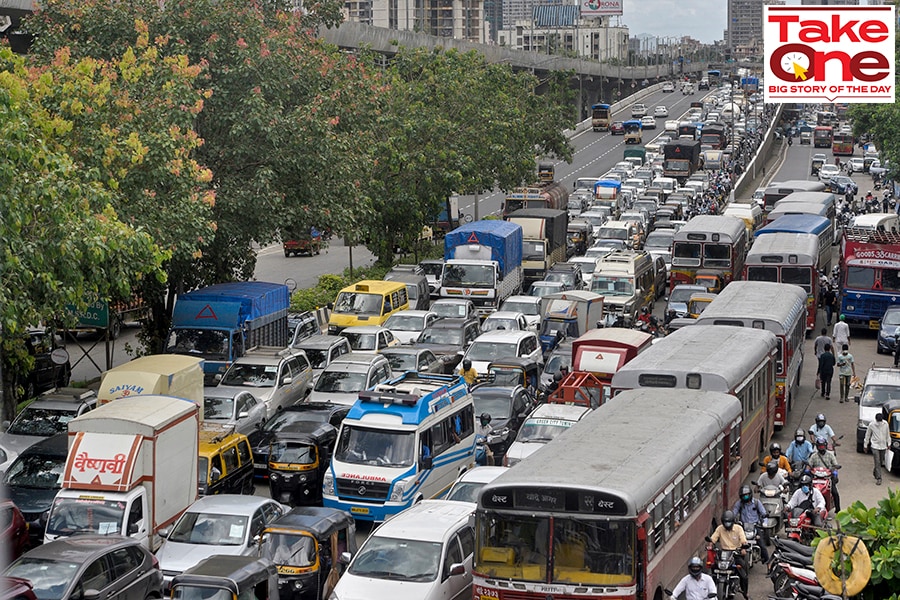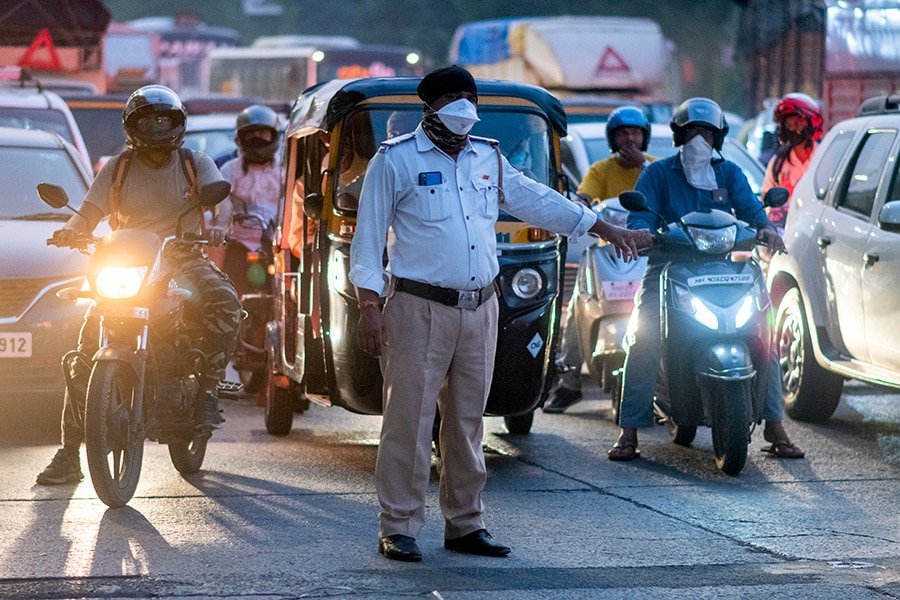
The perils of 'Horn Ok Please': Noise, speeding and rash driving
The Maharashtra government recently doubled the fines on honking. Reducing noise from traffic is important to ensure road safety in India which has the highest numbers of road accident deaths in the world
 Indian roads are among the noisiest in the world, with highest number of road accident deaths. Noise from continuous honking, which causes road rage, has never been considered a mainstream safety issue
Indian roads are among the noisiest in the world, with highest number of road accident deaths. Noise from continuous honking, which causes road rage, has never been considered a mainstream safety issue
Image: Satyabrata Tripathy/Hindustan Times/ Getty Images
A shrill horn pierced my eardrums. I jumped: It sounded like a truck was upon me. I looked up and saw a motorcycle. Its driver twisted and turned through bumper-to-bumper traffic stopped at a signal, willing cars out of his way. Other motorcycles, with multiple blasts of jumbled tones and frequencies, followed him.
The cacophony of horns interrupting Union Minister of Road Transport Nitin Gadkari’s morning meditation in Delhi must have been even worse. Delhi’s noise levels were even higher than Mumbai’s according to the last available Report of the Central Pollution Control Board (CPCB) of 2018.
The English word ‘noise’ is derived from ‘nautes’, the ancient Greek word for seasickness. Ancient Romans used it to define physically unpleasant sensations as bad as nausea. In English, ‘noise’ came to define the specific unpleasantness of loud, confusing sounds. The World Health Organisation (WHO) tells us that people cannot be safely exposed to more than 53 decibels of road traffic sounds in the day and 45 dB at night without experiencing noise.
The 2018 CPCB report quantified noise levels of all the six largest Indian metro cities as exceeding 80 decibels; a report submitted to the Bombay High Court by National Environmental Engineering Research Institute (NEERI) in 2018 attributed traffic as a leading contributor in India’s first comprehensive study in 27 major cities of Maharashtra. Dr Ritesh Vijay, senior principal scientist, NEERI, who conducted the study, told me, “Our data shows honking as the most major component of traffic noise.”



 Traffic policemen are among those most affected by constant honking. Noise pollution worldwide is the next big public health crisis. In densely populated Indian cities, noise pollution harms the health of billions of people.
Traffic policemen are among those most affected by constant honking. Noise pollution worldwide is the next big public health crisis. In densely populated Indian cities, noise pollution harms the health of billions of people.



